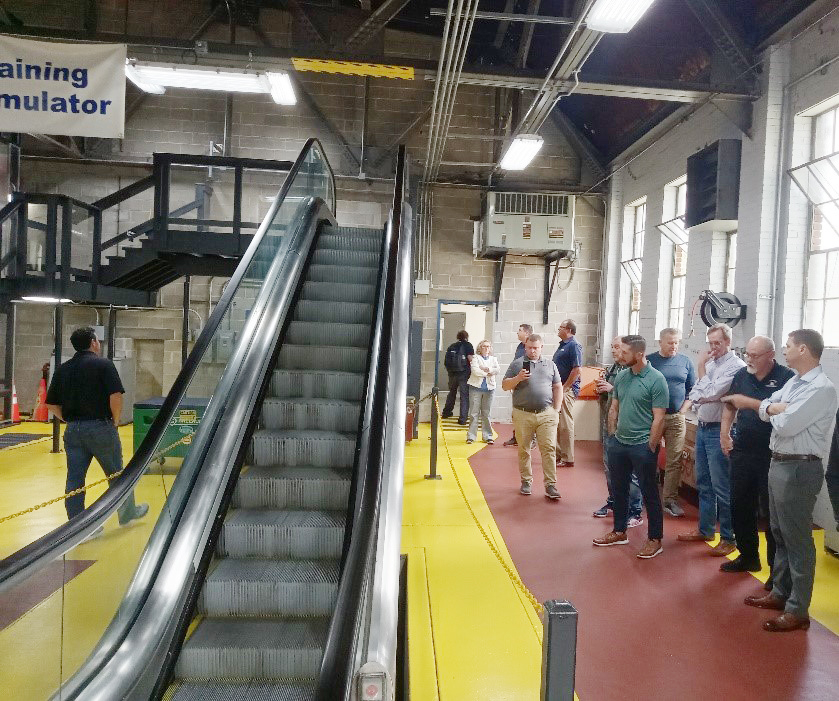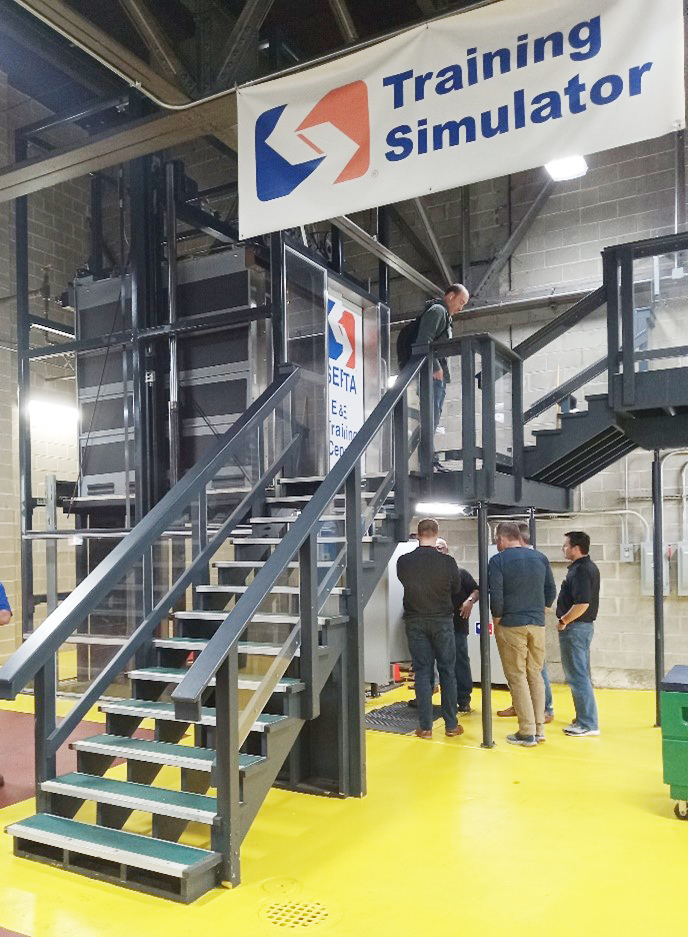Elevators and Escalators are Critical for Public Transit
By Bryan Sooter and James Michel | 8/29/2024
APTA Working Group Currently Updating Transit Industry Recommendations
BY BRYAN SOOTER
APTA Director–Standards
and JAMES MICHEL
Member, APTA Elevator & Escalator Working Group

With the creation of the underground and elevated urban railway, vertical movement became an important component of public transit. Initially, stairways provided most of the vertical movement, but, as some stations became deeper or higher, elevators and escalators were added to improve passenger flow. Most transit systems developed their own requirements for escalators and elevators, adopting applicable parts of the American Society of Mechanical Engineers (ASME) Standard 17.1. In 1991, the enactment of the Americans with Disabilities Act (ADA) mandated barrier-free access to public transit. This legal requirement caused APTA members to seek guidance and identify best practices for transit applications to obtain reliability as duty cycles were much more rigorous than in commercial buildings.
APTA established the Elevator & Escalator (E&E) Working Group in 2002, which drew upon the collective knowledge of the transit and elevator/escalator manufacturing industries to publish Design Guidelines between 2002 and 2004. The E&E Working Group, under the chairmanship of Edward La Guardia, has been meeting to update these APTA documents, initially focusing on the Heavy-Duty Hydraulic Elevator Recommended Practice. In mid-August, the E&E Working Group met in person at SEPTA’s elevator and escalator training facility in northeast Philadelphia. Agency representatives from New York to Portland and points in between, complemented by several elevator manufacturers and consultants, spent two days editing and updating the 20-year-old document to reflect current best practices and designs.

The SEPTA training facility is unique in that it has a laboratory setting with a functioning escalator and a short-rise hydraulic elevator installed where trainees can obtain hands-on knowledge and troubleshooting experience in a safe, controlled environment. Members of the E&E Working Group found this resource especially helpful in validating written requirements against actual machinery.
The E&E Working Group will continue to meet virtually to finish the hydraulic elevator document by the end of 2024. The immediate need is to have participation by additional manufacturer and elevator installer representatives to identify requirements that reflect current technology. In the APTA Standards Program, working group participation is open to all interested individuals irrespective of APTA membership. Interested individuals can contact Bryan Sooter, APTA director–standards, at bsooter@apta.com.
APTA Standards enhance the safety, reliability, accessibility, and quality of public transportation. They are critical to public transportation for:
- Safety: They ensure that public transit systems operate safely for both passengers and employees. This includes everything from vehicle design and maintenance to operational procedures and emergency protocols.
- Reliability: By adhering to standards, transit systems can offer more reliable and predictable service. This includes consistent schedules, on-time performance, and dependable equipment.
- Accessibility: Standards help ensure that transit systems are accessible to all passengers, including those with disabilities. This includes features such as low-floor buses, audible announcements, and ramps.
- Efficiency: Standards can streamline operations and reduce inefficiencies.
- Interoperability: When transit systems follow common standards, it is easier to integrate services across different modes of transport (e.g., buses, trains, subways) and across different regions.
- Quality Control: Standards help maintain a high level of quality in service. They provide benchmarks for performance and customer service, ensuring that transit providers meet minimum expectations.
- Cost Management: Adhering to standards can help control costs by reducing the need for custom solutions and allowing for bulk purchasing of standardized equipment and materials.
- Public Trust: Consistent standards build public confidence in the transit system. When passengers know what to expect, they are more likely to use and rely on public transit.